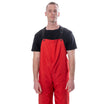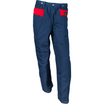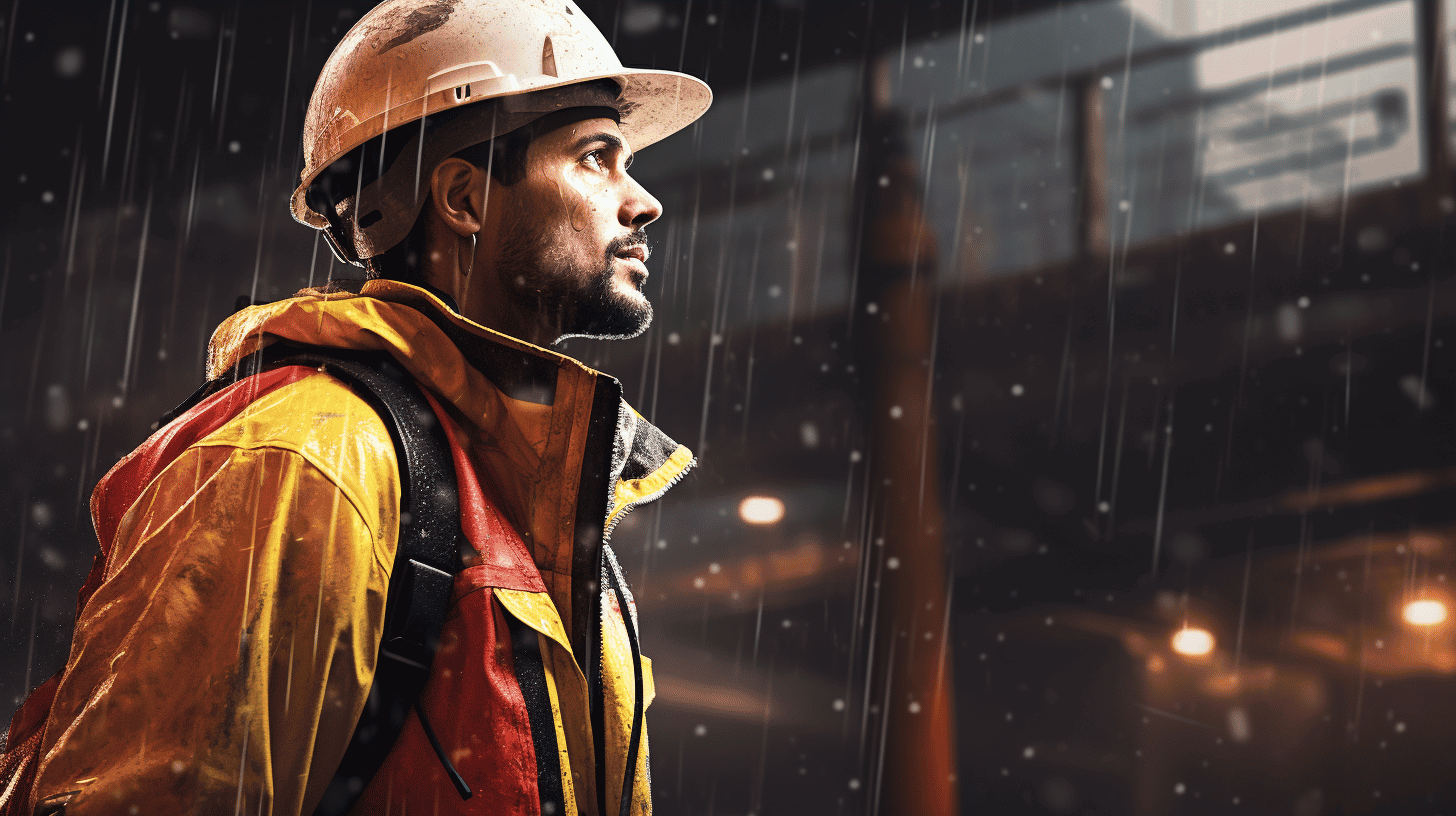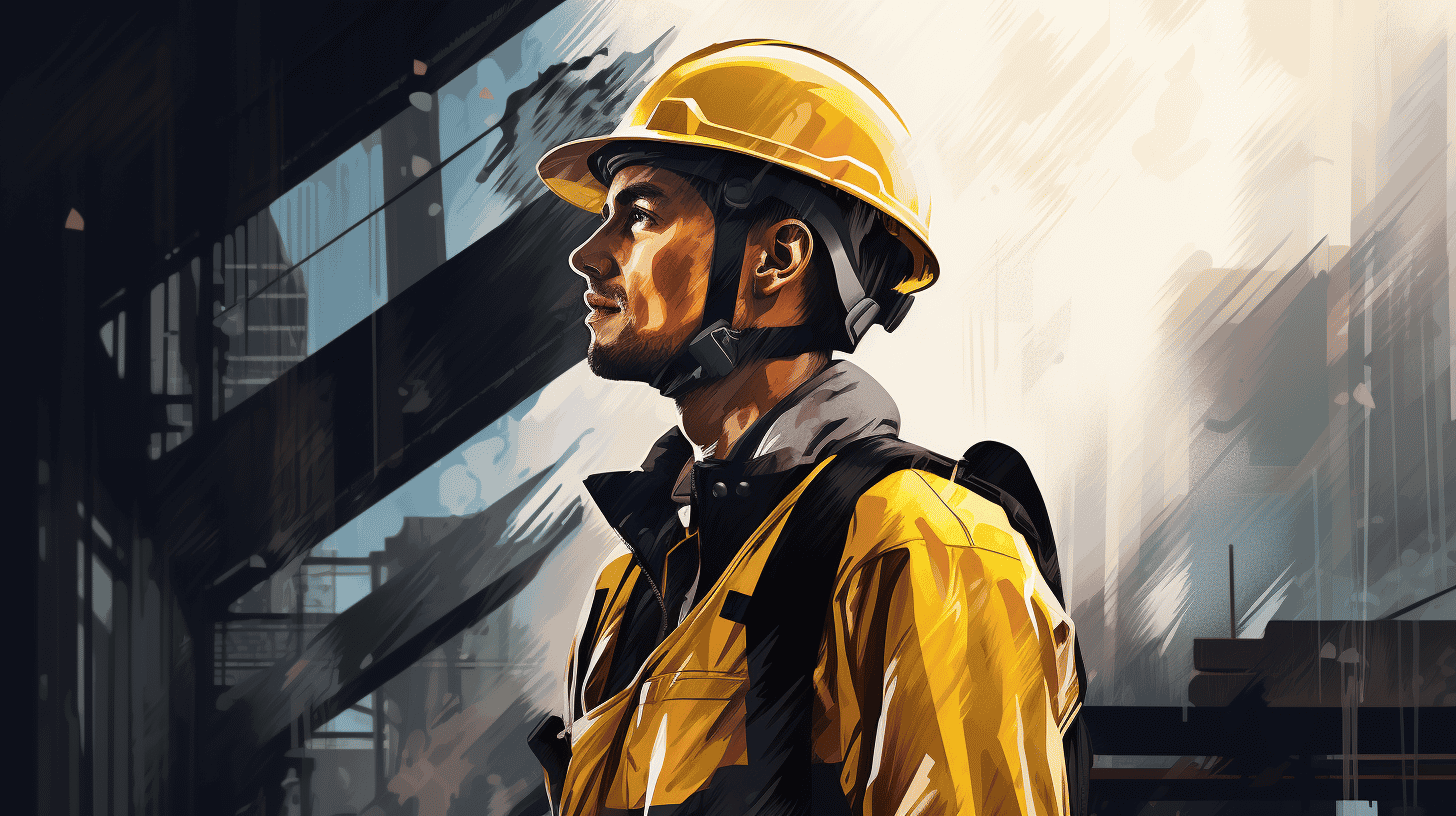The safety of a construction site can be influenced considerably by weather conditions. Unpredictable, adverse weather can pose an array of challenges, with rainfall being a dominant concern. Grim weather conditions make it essential for construction workers to have durable, weather-ready safety gear that fosters proper protection and functionality. A construction site braving the elements without quality rain gear can face safety risks, reduced productivity, and even potential liabilities. Thus, this article serves to underscore the significance of quality rain gear in helping construction sites weather stormy conditions while ensuring the safety and efficacy of outdoor work.
Weather-Ready Construction Site Safety Gear
Working in construction means dealing with unpredictable weather regularly. Whether it's extreme heat, winter’s bone-chilling cold, or a sudden downpour, every unexpected climate condition brings unique challenges to the job site. Therefore, selecting the right construction site safety gear ensures that workers remain prepared for any weather eventuality, hence reinforcing safety and productivity on site. Among the extensive range of wearable equipment, three types stand-out with their distinct advantages during inclement weather - Rainproof apparel, highly visible materials, and protective footwear.
Rainproof Apparel
A sudden shower can halt construction work, impede the movement of equipment, and, worse, put the safety of workers at risk. However, implementing quality rain gear enhances workers' safety and visibility when the skies crack open. With a Safety Gear with Durable Rain Gear, workers can stay dry and operationally efficient, even during rainfall. Moreover, these rain gears often have highly reflective strips ensuring maximum visibility in low light conditions, further enhancing safety parameters.
Highly Visible Materials
When weather conditions turn murky with cloud cover, fog, or rain, visibility is often compromised on the construction site. Safety gear that abides by standards like ANSI/ISEA 107 and ASTM F2407 prove to be life-saving. These high-visibility safety vests, often laminated with bright colors and reflective tapes, allow personnel to be quickly spotted, even in severe lighting conditions. This safety equipment allows workers to stand out visually in all weather conditions and minimizes accident probabilities on-site.
Protective Footwear
Finally, let's talk about the foundation of safety – footwear. Water-resistant, warm clothing and boots with deep, anti-slip treads are pillars of construction workers' safety. During rainy or winter conditions, the construction site can become commonly treacherous with wet, slippery surfaces. Ensuring workers are equipped with sturdy boots designed to provide firm grip on unpredictable surfaces adds another layer to their safety.
In a nutshell, the importance of implementing weather-ready construction site safety gear can never be underestimated. Not only does it safeguard the workforce against weather-related injuries, but it also ensures operational continuity, no matter what Mother Nature has in store. A well-prepared construction site is ultimately a safer and more productive one.
Workplace Injuries and Accidents related to Inadequate Rain Gear
Workplace conditions vary dramatically based on the industry, job responsibilities, and, at times, the mercy of the weather. One such weather condition is rain. While it can be refreshing, it poses a significant risk to employees, particularly those in outdoor industries. Accidents such as falls and vehicle collisions more frequently visit sites with heavy rain exposure. Having clearly outlined the potential injuries of having inadequate rain gear at your workplace, the next sections will delve into specifics, like slips and falls, vehicle collisions, and struck-by injuries.
Slips and Falls
Did you know that slips and falls account for a whopping 450,540 cases per year? This statistic is a harsh reality for those working in environments susceptible to rainfall. Workers in external environments are particularly vulnerable during heavy rain.
- Puddles and slippery surfaces: Rainwater inevitably creates puddles and slippery working surfaces. Workers can easily slip and injure themselves if they're not equipped with non-slip footwear.
- Poor visibility: Workers might not even realize a surface is wet until it's too late. This danger is amplified during heavy downpour when visibility is compromised, possibly leading to missteps and falls.
- Unsecure equipment: Climbing or walking on unsecure equipment is already perilous, and rain only exacerbates this. Be it ladders, scaffoldings, or even ironsheets in construction sites, rain makes them slipperier and hence more dangerous.
Vehicle Collisions
Rain also significantly affects drivers in transportation jobs. Heavy downpours impair visibility, drastically reducing reaction times and making it harder to see other vehicles and pedestrians. Hydroplaning, where the vehicle skids due to a layer of water on the road surface, can result in collision. These risks are particularly high for big vehicles like trucks and buses that are harder to control once they start skidding.
Struck by Injuries
It might be surprising to learn that struck-by injuries account for approximately 20% of construction industry fatalities. In situations of heavy rain:
- Equipment and materials can become insecure: If items haven't been secured properly, heavy wind and rain can cause them to fall or even fly, striking workers below.
- Lower visibility: Reduced light levels and poor visibility can lead to workers being struck by vehicles or equipment because they weren't seen.
In essence, understanding the potential risks associated with inadequate rain gear in different work environments is crucial in ensuring workers' safety. Equipping workplaces with appropriate resources coupled with comprehensive training on procedures during unfavorable weather conditions can significantly reduce the risk of injuries and accidents. It's all too clear that preventing workplace injuries related to inadequate rain gear not only saves lives but eventually contributes to the continual growth and success of any business.
Importance of Employer Provided Weather Gear
In every job, safety and comfort are paramount, regardless of the working conditions or circumstances. For those working outdoors, challenging weather conditions may be part of their daily routine. Be it rain, wind, snow, or intense heat, fluctuations in weather can significantly impact a worker's efficiency and overall wellbeing. This is why employers should step in and ensure their workers are well-equipped to face these varying conditions head-on. In particular, the provision of rain gear and waterproof footwear is a crucial aspect that employers should not overlook.
Let's delve into why it matters so much.
Keeping Workers Dry and Comfortable
Believe it or not, gearing up for the weather isn't merely about fighting off discomfort. A good rain suit and sturdy, waterproof footwear contribute to workers' safety on the job. It's simple - a dry worker is a safe worker.
The importance of 'staying dry' lies in these aspects:
- Decreased Risk of Illness: Frequent exposure to wet and cold conditions without adequate protection can result in various health problems, including hypothermia and frostbite. It can also weaken the immune system, leading to susceptibility to colds and other common illnesses.
- Improved Mobility and Productivity: Good weather gear ensures the mobility of workers, which boosts their productivity. For example, shoes with waterproof features can provide better traction, reducing the risk of slipping in wet conditions.
- Higher Morale: Workers who are well-equipped to handle adverse weather conditions also report higher job satisfaction and morale. A workforce that's comfortable, safe, and content will undoubtedly yield better productivity.
A Show of Care and Responsibility
Providing weather-appropriate gear to workers is not merely an act of compliance with rules or regulations. It showcases that employers value and care for their workforce. This can help in fostering a strong team spirit and loyalty among employees, which plays a critical role in reducing turnover and retaining talent.
So, an investment in quality weather gear for employees isn't merely a cost. It's a smart move that pays off in many ways by ensuring safety, improving productivity, boosting morale, and demonstrating the company's commitment to its team. Hence, it falls on employers to embrace the importance of providing weather gear, particularly rain gear and waterproof footwear, for their outdoor-working staff.
Emerging Trends in Construction Rain Gear
It's no secret that construction workers often find themselves battling the elements out in the field. Rain, notorious for slowing down projects and increasing safety risks, presents a significant challenge. But the exciting news is that with technology evolving at a rapid pace, we're seeing some remarkable new trends in construction rain gear that aim at keeping the brave souls on construction sites not only dry but also comfortable and connected. The latest innovations include the introduction of Bluetooth-enabled jackets and breathable rain pants. By leveraging technological advancements, rain gear manufacturers have turned these ideas into reality, revolutionizing the way construction staff brace the rain.
Bluetooth-Enabled Jackets
In an era of smart devices, it's only fitting that our clothing becomes smart as well. Bluetooth-enabled jackets have started to gain commendable traction in the construction industry. Seemingly just a hi-tech enhancement, these jackets serve a practical purpose for those working in noisy, bustling construction environments.
The jackets operate by connecting to workers' smartphones via Bluetooth. This offers easy access to calls, music, and other relevant apps, allowing workers to stay connected without even having to take their smartphone out of their pocket. As communication is crucial on construction sites for not just productivity but also safety, this trend in rain gear is a game-changer.
Moreover, some of these jackets even come equipped with built-in heaters, keeping workers warm during chilling rain or cold weather. All of this potentially contributes to better workflow efficiency on the site and, most importantly, improved safety.
Breathable Rain Pants
In the past, one of the main complaints construction workers had about their rain gear involved the inability to breathe properly. Fortunately, many manufacturers have recognized this issue and provided a solution in the form of breathable rain pants.
These pants are crafted using special materials and designs that allow for superior moisture-wicking. This means that they not only keep the rain out but also allow sweat and moisture from the body to escape. The benefit? Workers stay dry on both fronts - from the rain and themselves, enhancing comfort, productivity, and safety on site.
Even more exciting about these breathable rain pants is that they've been designed to endure the rough and tumble of construction work, offering impressive durability without sacrificing breathability.
In the journey towards progress and development, it's motivating to see the continuous advancements that improve workers' overall experience and safety - like the Rain Gear Trends in Construction we just discussed. After all, taking care of the workers who build our future should be as high a priority as the projects on which they work. And as technology continues to level up rain gear, we can expect to see even more innovative trends on the horizon.
Ensuring Construction Site Safety during Adverse Weather
Mother Nature can certainly leave her mark on a construction site. When the rain starts pouring, wind howling, or thunder rumbling, it's not just an inconvenience — it can be downright dangerous. If not properly managed, adverse weather conditions can lead to unnecessary accidents and unwanted delays, leaving you with unexpected costs and upset clients. But with careful planning and taking crucial preventive measures, construction companies can minimize these risks and ensure the safety of their workers. Here, we will delve into some key strategies that include safe work practices, maintaining a clear vision, and using the right protective gear.
Safe Work Practices
Creating a safe work environment on the construction site starts with adhering to safe work practices. These practices help to bolster the resilience of construction sites during rainfall and other severe weather conditions. Here's what to consider:
- Weather Monitoring: Regular monitoring of weather forecasts allows construction teams to anticipate and prepare for adverse weather. Real-time, accurate information can be the deciding factor in whether operations proceed as planned or are shut down temporarily to ensure safety.
- Work Schedule Adjustments: If severe weather is imminent, adjusting work schedules could help in avoiding hazardous conditions.
- Safety Training: Every worker should be adequately trained and aware of the safety protocols to follow during severe weather. This includes understanding the signs of adverse weather conditions and knowing when to cease operations.
Clear Vision
A clear line of sight is essential when operating power tools or heavy machinery, especially during rainfall or fog. Reduced visibility can severely impact a worker's ability to perform tasks safely and effectively. To maintain a clear vision in such conditions:
- Opt for Anti-Fog Solutions: Glasses with anti-fog lenses or applying anti-fog solutions can significantly improve vision in humid or wet conditions.
- Consider High-Visibility Gear: High-visibility clothing, particularly those with reflectors, can enhance visibility among workers and reduce accidents in low-light situations.
Proper Protective Gear
The significance of using the right protective gear cannot be overlooked when ensuring worker safety in adverse weather. Different weather conditions require different types of protection. In the case of rainfall:
- Water-Resistant Clothing: Waterproof garments like raincoats, pants, and boots can keep workers dry and comfortable, thereby lessening the likelihood of slips, trips, and falls.
- Gloves with Good Grip: Using gloves that offer an excellent grip can prevent workers from potentially dropping tools or slipping when climbing or handling equipment.
Remember, safety should never take a back seat. By employing safe work practices, maintaining clear vision, and using waterproof safety gear, construction sites can significantly improve their safety measures during rainy and other adverse conditions. A commitment to safety doesn't just protect workers; it protects the overall project timeline, budget, and reputation of the construction company.
Conclusion
The construction industry may be a dynamic field of work, but it doesn't change its core value—the safety of its workers. No matter the season or weather conditions, preparedness and the right gear are crucial components of ensuring this safety. With the deleterious impacts of inadequate weather-related gear, such as increased workplace injuries and accidents, and compromised productivity both well-documented, it's evident how integral weather-ready equipment is to jobsite safety.
As safety continues to be a common concern, companies like Hurricane Raingear are stepping up. Recognizing the need for durable, comfortable, and weatherproof safety apparel, developers have begun pushing the boundaries of what safety gear can do. Emerging trends seeing Bluetooth-enabled jackets and breathable rain pants are only the beginning.
At the end of the day, worker safety hinges on the collaborative efforts of both employers, who should be responsible for providing adequate gear, and workers, who must practice safe work strategies in adverse conditions. Combine this with progress in protective gear progression, and the construction industry is well on its way to becoming a safer workplace, regardless of what Mother Nature might have in store.
Remember, the rain doesn't have to stop you. With the right equipment like that on offer at Hurricane Raingear, you'll be ready to face whatever the weather throws at you. Prepare for the worst, and you'll be able to work at your best.
Frequently Asked Questions
-
What are the essential rain gear items for construction site safety?
The essential rain gear items for construction site safety include waterproof jackets, pants, boots, gloves, and hats. It's important to choose durable rain gear made from high-quality materials to ensure maximum protection against the weather elements.
-
Why is weather preparedness important on construction sites?
Weather preparedness is crucial on construction sites to ensure the safety and well-being of workers. Adverse weather conditions like rain can create slippery surfaces, reduce visibility, and increase the risk of accidents and injuries. Proper rain gear helps maintain a safe working environment.
-
What should I look for when selecting durable rain gear?
When selecting durable rain gear, look for features such as waterproof or water-resistant materials, sealed seams to prevent water penetration, adjustable cuffs and hems for a secure fit, and reflective elements for enhanced visibility.
-
How often should I replace my rain gear on a construction site?
The lifespan of rain gear depends on usage and quality. However, it is recommended to regularly inspect rain gear for any signs of wear, tear, or damage. Replace rain gear if it no longer provides adequate protection or if there are any visible defects.
-
Can rain gear be used for other outdoor activities besides construction site work?
Yes, rain gear can be used for a variety of outdoor activities besides construction site work. It is versatile and provides protection against rain and other weather conditions. Whether you're hiking, camping, or engaging in any outdoor activity, durable rain gear is valuable.





















Leave a comment
This site is protected by hCaptcha and the hCaptcha Privacy Policy and Terms of Service apply.